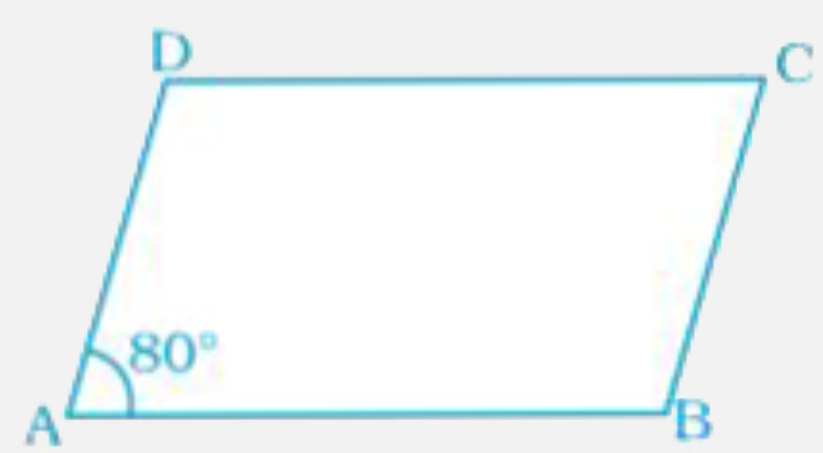If ABCD is a parallelogram with two adjacent angles ∠A=∠B then the parallelogram is a
A
rhombus
B
trapezium
C
rectangle
D
none of these
Video Solution
Text Solution
The correct Answer is:C
∠A+∠B=180∘and∠A=∠B⇒∠A=∠B=90∘
∴ ABCD is a rectangle
|
Topper's Solved these Questions
- QUADRILATERALSBOOK - RS AGGARWALCHAPTER - QUADRILATERALSEXERCISE - MULTIPLE-CHOICE QUESTIONS (MCQ)
9 Videos
- QUADRILATERALSBOOK - RS AGGARWALCHAPTER - QUADRILATERALSEXERCISE - Short-Answer Questions
1 Videos
- QUADRILATERALSBOOK - RS AGGARWALCHAPTER - QUADRILATERALSEXERCISE - EXERCISE 10C
18 Videos
- PROBABILITYBOOK - RS AGGARWALCHAPTER - PROBABILITYEXERCISE - Multiple Choice Questions (Mcq)
16 Videos
- TRIANGLESBOOK - RS AGGARWALCHAPTER - TRIANGLESEXERCISE - MULTIPLE-CHOICE QUESTIONS (MCQ)
10 Videos
Similar Questions
Knowledge Check
If an angle of a parallelogram is two-thirds of its adjacent angle, the smallest angle of the parallelogram is
A54∘B72∘C81∘D108∘If an angle of a parallelogram is four fifths of its adjacent angle, find the angles of the parallelogram.
A90∘,100∘,90∘,100∘B80∘,100∘,80∘,100∘C80∘,110∘,80∘,110∘D80∘,200∘,80∘,200∘ABCD is a cyclic parallelogram. The angle ∠B is equal to :
A30∘B60∘C45∘D90∘
If an angle of a parallelogram is two-third of its adjacent angle, find the angles of the parallelogram.
View SolutionIf the adjacent angles of a parallelogram are equal, then the parallelogram is a
View SolutionIn a parallelogram the sum of any two adjacent angles is 1800.
View SolutionTwo adjacent angles of a parallelogram are in the ratio 1:5. find all the angles of the parallelogram.
View SolutionIn parallelogram ABCD, find ∠B, ∠C and ∠D.

View Solution
